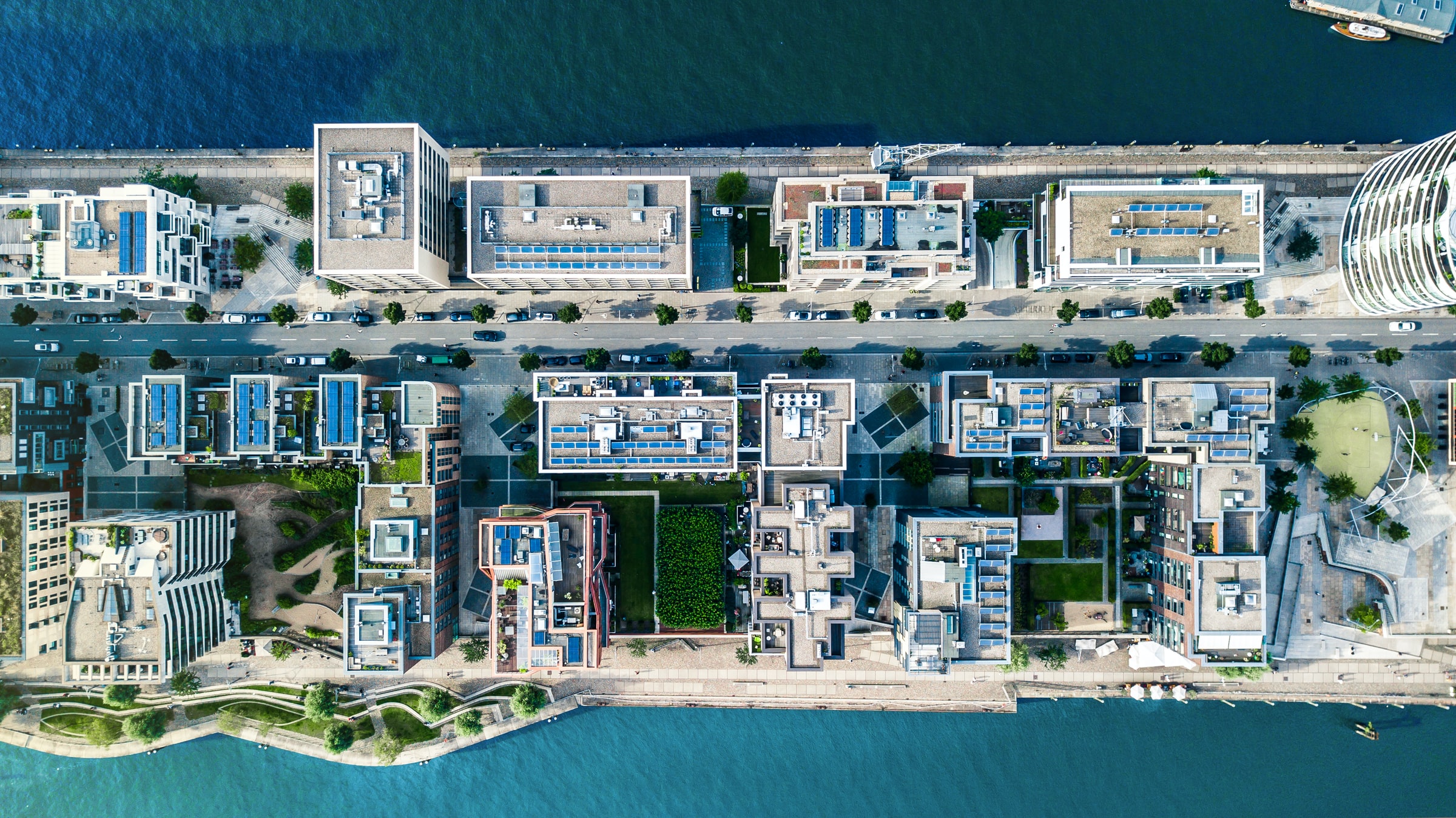Sustainable Neighborhood Design
Sustainable Neighborhood Design
Sustainable neighborhoods don’t happen by accident. They are created through careful planning and development that create spaces that are livable and vibrant with a high quality of life for all the residents. Successful and sustainable neighborhoods do not only contribute to the eco-friendliness of the area, but also to prosperity and happiness of the residents, considering that they are the foundation of the cities. To design a sustainable and successful neighborhood, urban planners and designers look for economic development and diversity, with the aim to provide different types of housing designs and creating an attractive environment for people of all ages.

Here are a few elements that can help urban planners create better, sustainable, and inclusive neighborhoods:
1- Creating accessible and inclusive parks and community spaces
Parks and community spaces are the main common element that must be present in every neighborhood. To be considered sustainable, each neighborhood should offer a high-quality public park where people can go meet other members of the society and build a healthy relationship with the other residents. These parks can have a variety and mix of recreational opportunities for different group ages, to attract people of all ages and encourage them to take part in the activities taking place within the community, such as fairs, parties, etc. On the other hand, a successful neighborhood also provides other community spaces that encourage the residents to move and live healthier, such as sports playgrounds.
2- Preserving the neighborhood’s natural features
Wherever we go around the world, we can find natural features that are unique to specific areas. These existing natural features can add value and enhance the look and design of the area. This is why it is important when planning and designing a neighborhood to take into consideration and preserve these features, as they will also contribute to sustainable neighborhoods. Natural features can include here any watercourses, greenways, vegetation, etc. that might be found around the area.
3- Ensuring mixed land uses
Mixed uses of lands in neighborhoods are very important, as they allow urban planners to create sustainable and environmentally-friendly spaces. In fact, having a mix of land uses in a neighborhood, such as commercial, residential, institutional, and employment uses, as well as parks, streets, and amenity sites, can help reduce a neighborhood’s impact on the environment, as mobility and the need to travel to other areas to access different services is reduced. This can also help achieve economic prosperity and thus a better quality of life for the residents. Distances between residential areas and other areas in the neighborhood should be taken into consideration here, as good zoning would raise the comfort level in the neighborhood, and thus leading to happier residents.
4- Providing different public transportation choices for the residents
Public transportation and accessibility are two essential elements in sustainable neighborhood development. In fact, effective transportation networks that include public transport, such as buses, help lower the neighborhood’s impact on the environment, as traffic and the use of cars are both reduced, making the neighborhood safer and more livable. Creating lanes for cyclists, as well as pedestrians, is also considered very important, as this would make them feel safe and encourage them to lead healthier lives through cycling, running, and walking. It is important to mention here that connectivity is very important, as streets in the neighborhood should be connected together to facilitate mobility.
5- Landscaping and streetscaping
In addition to being aesthetically pleasing, landscaping and streetscaping can add a lot of enjoyment and value to the neighborhood. In streetscaping, it is not necessary to select street furniture that match in style or color, but they should be compatible to create harmony and elegance. On the other hand, it is very essential to add trees and greenery all around the neighborhood to beautify it and make it look more alive and healthy. In fact, the more green spaces there are in the neighborhood, the less pollution there is, reducing the neighborhood’s carbon footprint on the environment. In addition, other features can be added around the neighborhood too, such as water features, seats in bus stops, bike racks, benches, bushes, trees, vertical gardens, and, most importantly flowers, which would also help add a dash of color around the neighborhood.
6- Choosing and implementing green infrastructure
At the scale of a neighborhood, green infrastructure includes a range of measures that use sustainable and resilient systems, as well as soil and plant systems, that manage stormwater flow and reduce flooding and runoffs. Green infrastructure here can include green roofs, which can absorb water and reduce runoff risks. Permeable pavements are another example of green infrastructure. These types of pavements, often made from pervious concrete or porous asphalt, are able to store and even treat rainwater. Permeable pavements are durable and cost-effective, and eliminate the need for expensive and unsustainable drainage systems. Other green infrastructure examples also include urban forests, wetlands, and rain gardens. It is worth mentioning here that creating enough lanes for easier access to emergency and police vehicles and garbage trucks is very important to ensure a safer and better quality of life for the residents.
In the last few years, there has been a major shift in the way neighborhoods are designed across the world. Urban planners and designers are working together today to define better ways to design walkable, livable, and healthier new neighborhoods. A neighborhood’s success is now measured by how comfortable and safe all residents feel. Sustainability is another new measure of success when it comes to neighborhood planning, because, in addition to making the area more resilient and eco-friendlier, sustainability provides a healthier and higher quality of life with less pollution and reduced health risks. This is why sustainability has become the number one goal that urban planners strive to achieve in any type of urban development.
Follow Noëlla Aoun Design Studio for more Urban Design, Architecture, Interior Design, Landscape Design, Environment, Real Estate and Sustainable Development articles.

